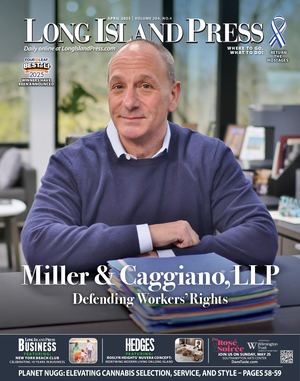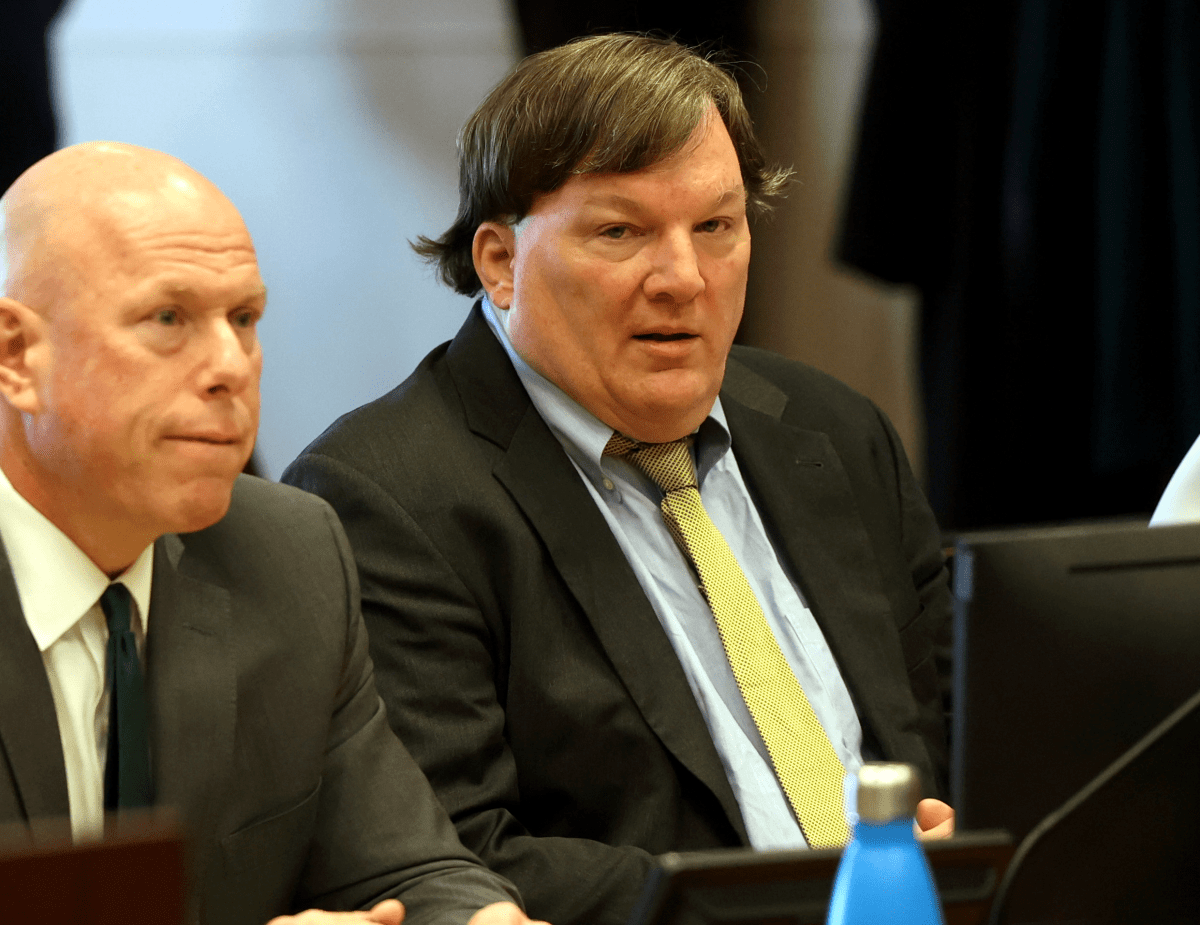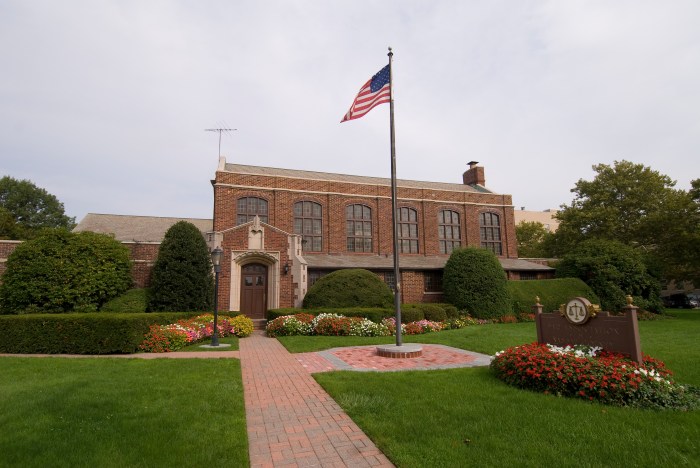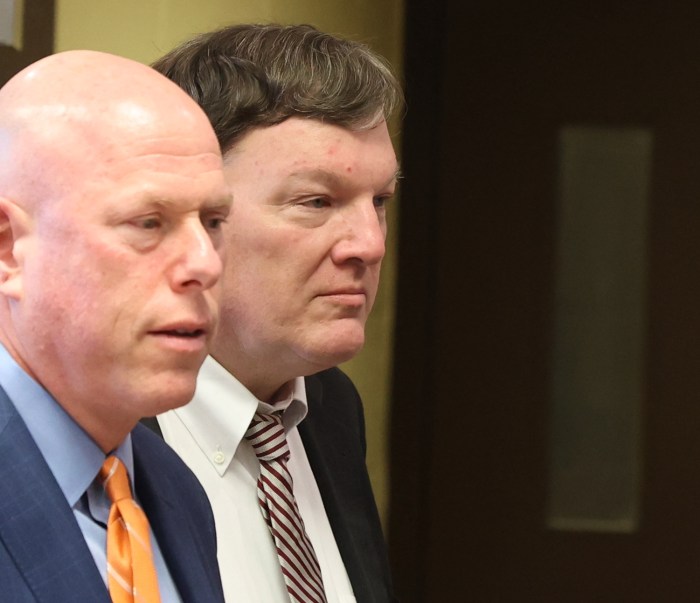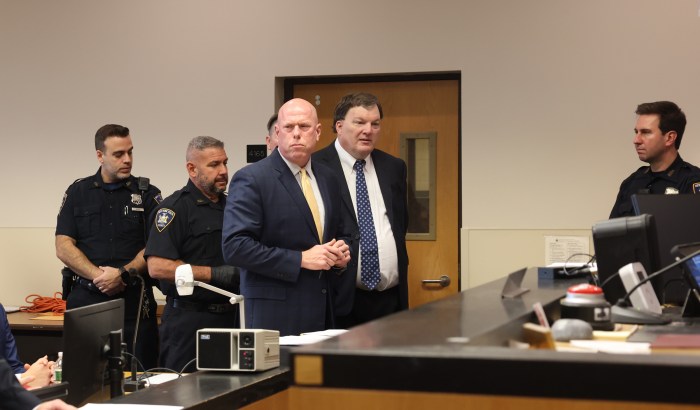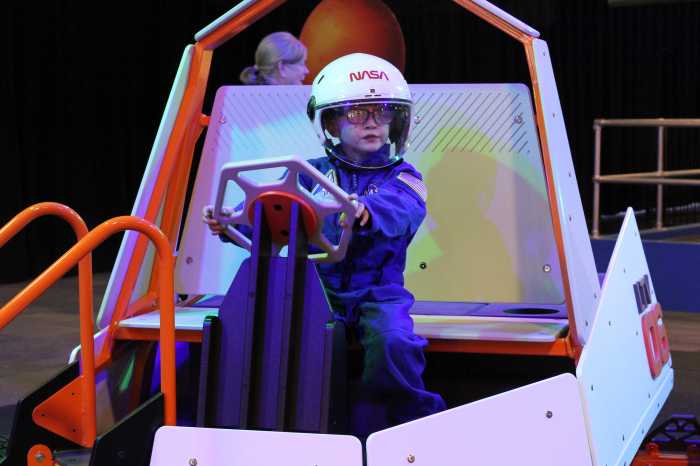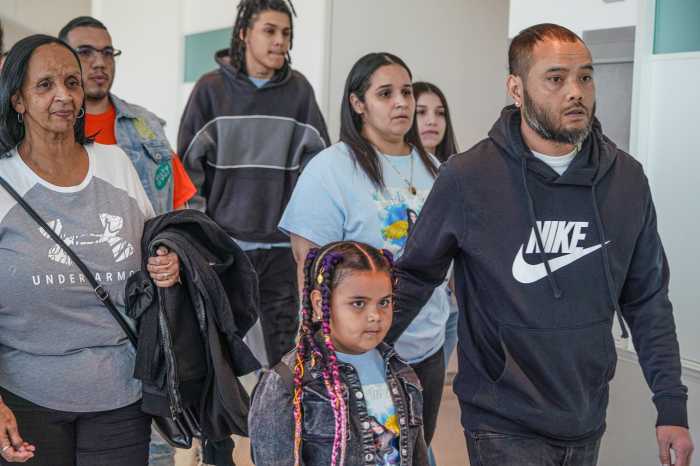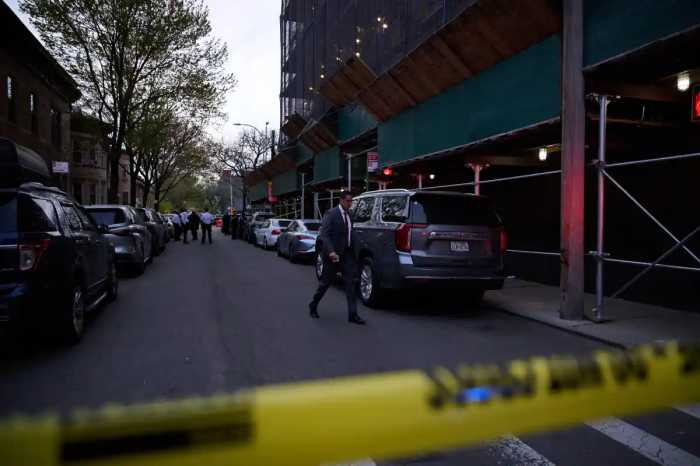As defense attorneys in the Gilgo Beach serial killer case battle against the validity of using advanced DNA evidence court, arguments pivoted to an unexpected tangent: Jurassic Park.
The Frye hearing serves to determine whether nuclear DNA testing is admissible evidence in the case to convict suspect Rex Heuermann, who has pleaded not guilty to murdering seven women between 1993 and 2010. On the second day of the hearing, prosecutors called Dr. Nicole Novroski — a forensic scientist and associate director of the University of North Texas’ Center for Human Identification — to provide expert testimony on different methods of DNA testing. As part of her slideshow presentation, Novroski showed a clip from James Cameron’s beloved science fiction film, Jurassic Park, that explained to the characters how DNA extraction, testing and replication methods were used to clone dinosaurs.
Novroski included the clip to demonstrate that DNA testing is not novel, but “has been around for decades,” she said, enough so to be mentioned in a 1992 blockbuster.
This was a point of contention during the cross-examination performed by Michael Brown, Heuermann’s defense attorney.
“In Jurassic Park, correct me if I’m wrong, but (the character) Dr. Hammond said, ‘We have good science,” Brown said. “He said it was safe, and then the dinosaurs ate everybody.”
He asked Novroski whether she agreed that the science in Jurassic Park wasn’t put through the necessary testing before use. She said she couldn’t speak to the testing hypothetically used to clone dinosaurs in the film.
“So, you’re okay with the science in Jurassic Park?” Brown asked.
Novroski replied: “I’m okay with the explanation of DNA in the clip from the movie.”
Prior to the science fiction tangent, Novroski asserted that the SNP — single nucleotide polymorphism — method of testing DNA was well-established in the scientific field. She included in her presentation a 35-item list of what she said are relevant, reputable published studies about the topic.
The defense, however, said that the method is not science, but ‘magic.’ Though this specific kind of DNA testing has been used in at least two prior cases — one in Idaho and one in California, Novroski said — there is no precedent for using it in New York State courts. Further, California-based Astrea Labs, the organization that analyzed the DNA sample, is not one of the eight institutions accredited for forensic testing by ANAB, the American National Standards Institute’s accreditation board.
Though this method of DNA testing has not been used in criminal court in New York, it has been used for decades and is well-established in multiple scientific fields, Novroski said. One 2018 study, completed by three individuals who work for the FBI, found that this alternate method of testing is reliable enough to “[move] away from” the priorly used STR — or short tandem repeats — method of DNA testing. That conclusion is largely representative of “the vision and views of the forensic science community” of SNP testing replacing STR testing as the “gold standard.”
“Forensic genetics is an applied field,” Novroski said. It “relies on the processes of other fields” — health care and anthropology, for instance, in which SNP testing is well-established, she asserted — to “drive it forward.”
But its use in other fields doesn’t mean SNP testing is at the same level of validity as STR testing, Brown argued.
“Every step of the way it was scrutinized,” he said. “[It] didn’t just pop into the courtroom. It went through a lot of steps” in order to finally establish its court admissibility.
Judge Timothy Mazzei adjourned the hearing for the day on Wednesday before the cross-examination could be completed. The hearing resumed early Thursday, and Brown continued to cross-examine Novroski — albeit with no Jurassic Park references. Brown argued that the scientific research Novroski cites — with regard to nuclear DNA testing — did not do their testing with enough individuals, this time likening it to experimental medicine.
“You wouldn’t take a cancer drug if it was only tested on five people,” Brown argued in court.
Assistant District Attorney Nicholas Santomartino also questioned Novroski, who continues to insist the techniques used by Richard Green and Astrea Labs Inc. are valid science. When the hearing adjourned for the day, District Attorney Ray Tierney and his team did not speak to reporters.
“I’ll wait until the end [to comment], like you should,” Tierney said immediately after exiting the courtroom. “Like you’re ethically supposed to.”
Brown did.
“The witness, the doctor, in some ways, was combative,” Brown said. “I think when I brought it down to a very basic level about taking a medicine that’s only been tested on eight people, she finally would agree with me that she’s not taking that medicine. And that’s in essence what we’re doing on this case. They asking the court to believe the science based on a sampling of eight people.”
When asked how the defense might proceed should the nuclear DNA be admitted — specifically, if a guilty plea would be on the table — Brown said they are taking this case one step at a time.
“[Heuermann] has maintained his from the beginning,” Brown added. “He is looking forward to getting to the point where we can try this case.”
The next court date for this Frye hearing is set for April 15, and the prosecution is expected to bring in Richard Green himself, the co-founder of Astrea.
Related Story: Gilgo Beach Serial Killer Suspect Rex Heuermann an ‘Ogre’ Who Defies Supervillain Myth
Related Story: Heuermann Charged With Murders of Jessica Taylor and Sandra Costilla, Alleging New MO
For more Long Island Serial Killer coverage, visit longislandpress.com/tag/long-island-serial-killer
